Review for Fairy Tail: Part 3
Introduction
Shonen anime does my head in at times. The current poster child for the genre, Bleach, despite coming to an end in Japan, still has a couple hundred episodes to release in the UK, and its future seems assured now that Kazé have taken over the distribution duties. I think it's dull, tedious and monotonous, and gets even more so with each subsequent release. On the other hand, Fairy Tail has been going from strength to strength with each instalment, blending its comedy and action with deft skill. And to date, Funimation still haven't announced that they have licensed anything past the first 48 episodes. We're most of the way through the current convention season in the US, with only Otakon remaining as the last major gathering of the summer, and people are waiting on Funimation with bated breath. If Fairy Tail does another D.Gray Man, there are going to be a whole lot of irate fans out there.
The Kingdom of Fiore is a rather special place, a nation of some 17 million where magic exists, is commonplace, and is a commodity to be bought and sold. Those who become proficient in magic are the wizards, and together they form guilds to serve the community, or serve themselves. The most famous, and indeed the most infamous guild of them all is Fairy Tail. 17-year-old Lucy Heartfilia is a wizard, or rather she wants to be a wizard. She's already skilled in a Celestial magic, able to summon spirits to do her bidding using Gatekeys. Her dream is to be in Fairy Tail, and when she meets a travelsick young wizard named Natsu, and his talking cat companion Happy, it seems like destiny has brought them together. Now Lucy has joined the Fairy Tail Guild, and with its unique roster of wizards, including Natsu, the ice wizard Gray Fullbuster, and the armour wizard Erza Scarlet, and the flying cat Happy, they undertake the toughest, the most challenging, and the weirdest of missions.
Manga Entertainment release the next twelve episodes of Fairy Tail across two discs. In this batch of episodes, the conflict that developed previously between Fairy Tail and their rival guild Phantom Lord comes to a resolution. Then Lucy decides to confront the mysterious figure that put Phantom Lord's nefarious plan in motion, her father. With the strongest team in Fairy Tail formally established, it also becomes clear just how much collateral damage they leave, so Makarov assigns Natsu, Erza, Lucy and Gray (and Happy) a simple mission of helping an ailing theatre (surely they can't cause any damage there). Then taking a break at a spa resort seems like fun, but then Lucy discovers Loke's secret, and just why that wizard has been avoiding her. A second attempt at a vacation goes even more badly, when figures from Erza's past reappear, with a nefarious plan to turn the world of magic upside down.
Disc 1
25. A Flower Blooms in the Rain
26. Wings of Flame
27. The Two Dragon Slayers
28. Fairy Law
29. My Resolve
30. Next Generation
Disc 2
31. A Star Removed From the Sky
32. Celestial Spirit King
33. The Tower of Heaven
34. Jellal
35. Voice of Darkness
36. Heaven's Game
Picture
Fairy Tail gets a 1.78:1 anamorphic transfer, which courtesy of Australia's Madman Entertainment is a native PAL conversion, with the 4% speedup that implies. The image is clear and sharp throughout, free of any obvious compression signs, and generally very pleasant too watch. It's a bright, lively anime, and given that it's a long running series, the character designs are understandably simplistic, the world design not overly complex. It's full of primary colours, and the animation itself is energetic, especially through the various spell sequences. As each of the spells has a special move, and the characters calling out the name of each one, you can expect a fair bit of repetition of the expensive, CG enhanced spell, summoning, and transformation sequences, but it hasn't yet gotten tiresome in these twelve episodes.
Sound
You have the choice between DD 5.1 Surround English, and DD 2.0 Stereo Japanese, with optional translated subtitles and a signs only track. I sampled the English dub, and found it to be a typical anime comedy dub, high pitched female voices, and loudness and manic intensity substituting for humour. My preference as always was for the Japanese audio track with the subtitles. It too is adequate, although one slight point of annoyance for some may be the lead character of Lucy played by Aya Hirano, who simply supplies another variation of her stock Haruhi Suzumiya tsundere voice. Otherwise it's a fairly run of the mill audio track, playing the show for laughs, with little yet to stretch the characters. More impressive is the show's music, which with a pop Celtic theme supplements the show's magical themes very well, although it is boosted by a wholesale plundering of the classical music archives. The subtitles are clear, well timed, and free of error throughout.
Extras
The discs get static menus with the show's music playing in the background.
The first disc gets just one audio commentary to accompany episode 26. In it, ADR Director Tyler Walker and the Mix Engineer Andrew Tipps get together to chat about the way that the English dub is put together, and more importantly, how Funimation creates a 5.1 surround track from the original stereo effects and music track that the Japanese company supplies. This does get pretty technical, but it's a nice accompaniment to an episode which divulges information you may never have heard.
Disc 2's audio commentary accompanies episode 32, and this time Tyler Walker hosts Cherami Leigh (Lucy), and Eric Vale (Loke) to talk about the episode and Loke's character arc in the story.
Disc 2 also has the textless credits, two versions of the opening and two versions of the closing. And once again, forced subtitles on textless credits don't exactly make them textless, now do they?
Conclusion
Fairy Tail just keeps on going from strength to strength. This third collection of episodes is the best yet, building on what has come before, and delivering new stories and revealing new aspects of the characters. It manages this through consistency. The quality of the animation never varies, the quality of the writing is maintained throughout, and the show keeps a good grip on the pace, the narrative, the deft blend of comedy, action and melodrama. You know exactly what you are going to get when you sit down to watch an episode of Fairy Tail, and the show never disappoints. Even when the show gets to moments of filler material, which is not in the original manga, the quality of the writing stays high, and the filler is always mercifully brief, although fortunately there is no such filler in this release. Regardless, it hasn't yet reached the shonen nadir of Naruto style filler, or Bleach style endless episode spanning fights bolstered by flashbacks and recaps and exposition. This is shonen anime in its purest sense.
The irony of it is that 36 episodes into the series, we are really only still setting up the rules of the world, and introducing and building the characters. The Galuna Island arc that concluded in Part 2 set about exploring Gray's character and his past, and that collection also saw the start of the Phantom Lord arc which concludes in this set of episodes. It seemed at the start of that arc to be a battle between two guilds, which had the added benefit in the previous instalment of revealing Elfman and Mirajane's pasts. The true reason behind Phantom Lord's attack on Fairy Tail becomes clear in Part 3, and it's here we get to learn about who Lucy Heartfilia really is, and the past that led her to become a celestial wizard. She has to confront that past before she can move on, and in doing so she learns just how much Fairy Tail has come to be her surrogate family.
There then follows a short arc where we learn about Loke's true identity, and his past. He's the anorak wearing serial womaniser that has been in the background of the Fairy Tail episodes up to this point, and who also for some bizarre reason appears to be terrified of Lucy. The reason why becomes clear here, and it turns out to be quite the unexpected and entertaining development.
Then to conclude these discs, we get the start of the Tower of Heaven arc, taking us into Erza's past, which turns out to be the most tragic of the back stories revealed so far. Erza is one of the strongest wizards in Fairy Tail, the only one that can keep Natsu and Gray subdued when they butt heads, and whose armour ability strikes fear into her foes. Yet it turns out that she had a tragic and terrible childhood, literally enslaved to work on a magic cult's doomsday weapon. Though tormented and abused, through determination and luck, she and her friends managed to engineer an escape, only for an unexpected turn of events to leave her the only one to make it out. In the Tower of Heaven arc, she encounters those friends again, and the normally strong and intense Erza is completely unnerved by feelings of guilt and remorse. It's down to her friends in Fairy Tail to rescue her.
Fairy Tail really isn't that spectacular a departure from the usual shonen anime tropes. Its story structure is familiar, although it does keep its levelling up and succeeding through superior willpower discreet and understated. The characters also conform to very familiar stereotypes. Where it excels is in the balance of melodrama, action and comedy, coupled with the show's brisk pace. It never lets up on the intensity, while it know just how to lighten the mood after breaking your heart, making you understand the emotional consequences of the battles that the characters may face, or throw in a pratfall in the middle of a fight to death to remind you that this is just an anime, and the most important thing is that you have fun watching it. I haven't seen any other anime show gets the balance as perfectly judged as Fairy Tail does, and of all the long running shows that Manga Entertainment have released, it ranks among the finest. All of which makes it all the more imperative that Funimation get their finger out and license the rest of the show.
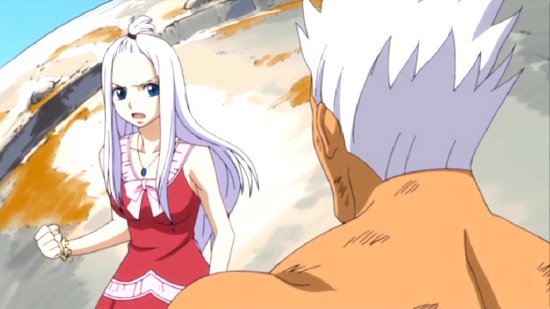
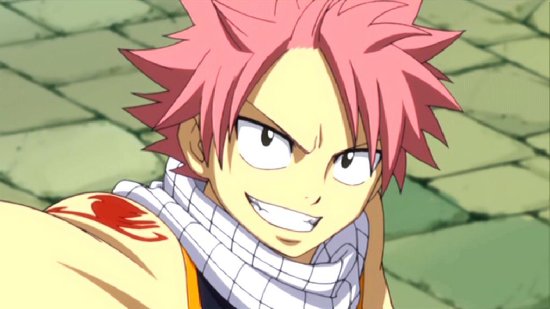
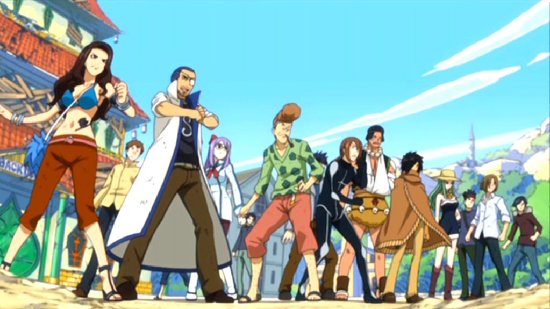
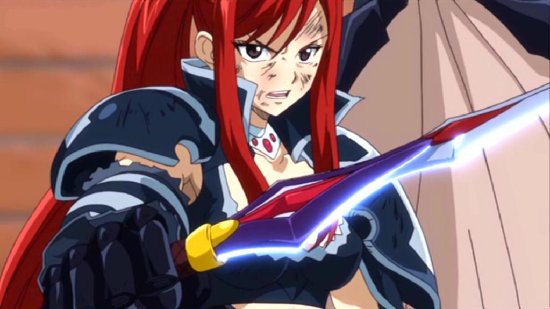
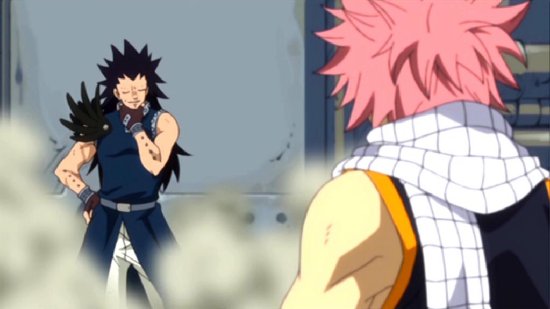
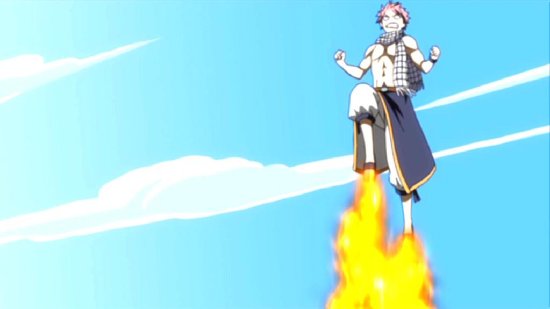
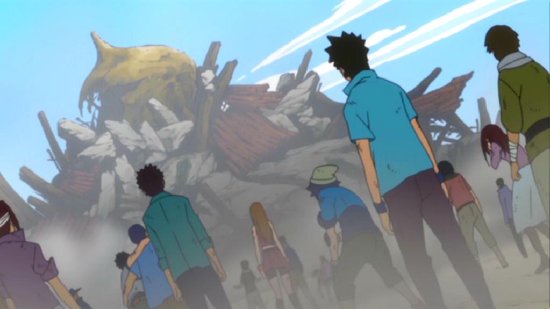
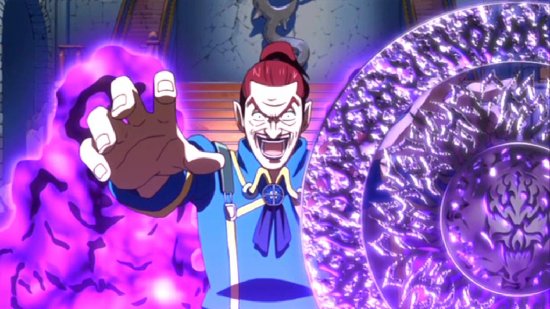
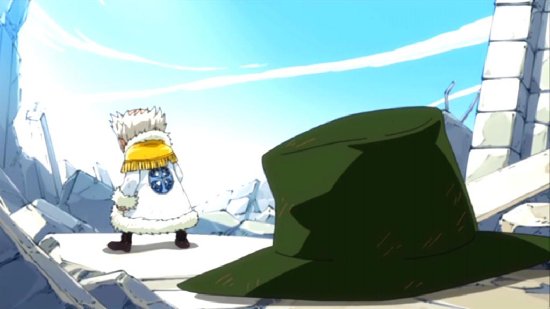
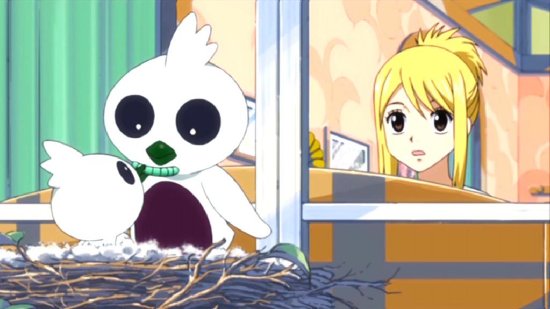
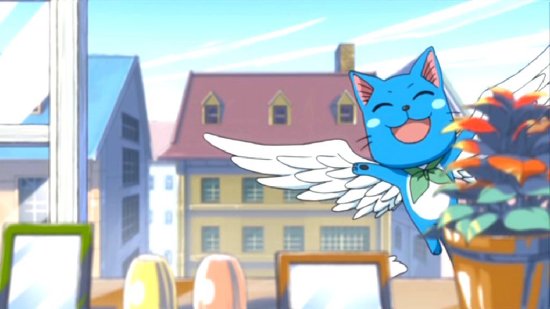
Your Opinions and Comments
Be the first to post a comment!